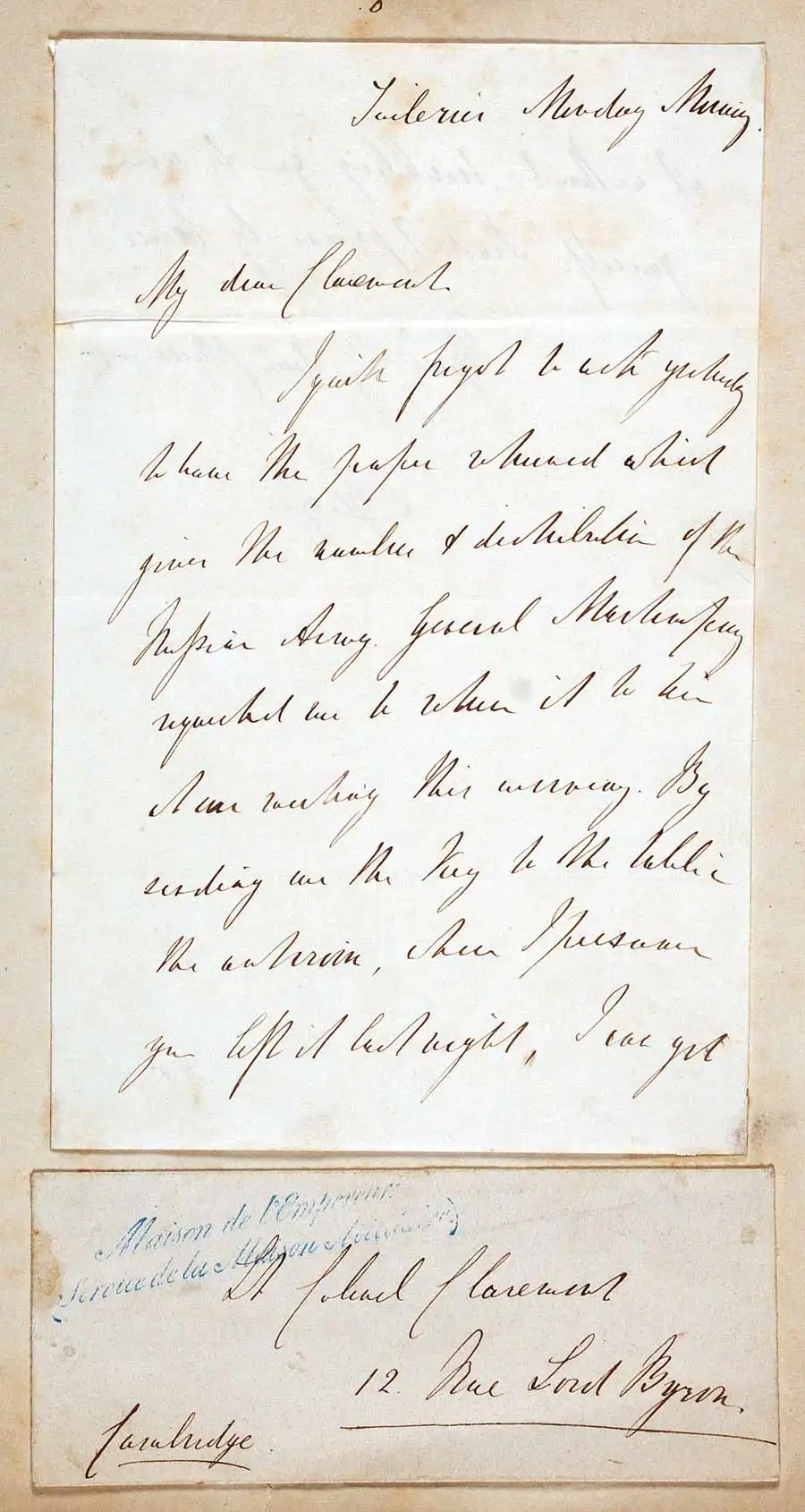Case W1
- Reed Autograph Letters Collection

Document concerning financial support given to Henry Foubert for the Royal Academy. Signed by Queen Anne (1665–1714) and issued by Sidney Godolphin, 1st Earl of Godolphin (1645–1712), 30 October 1704.
Queen Anne (1665–1714) reigned from 8 March 1702 to 1 August 1714. The second daughter of James II, Anne acceded to the throne upon the death of William III who, with his wife Mary, Anne’s sister, had deposed their father in what is known as the ‘Glorious Revolution’ of 1688.
Like monarchs before and since, Anne provided financial support to a number of institutions. The document exhibited here concerns an annual payment made to Henry Foubert (d. 1743) in support of an academy established in late seventeenth-century London by his father to teach military exercises. Payment was made in the order of ‘Sixty two poundes Tenn Shillings without Account, as of Our free Gift and Royale Bounty, which Wee are graciously pleased to allow [Foubert] in consideracon [sic] of the charges and Expences … in the maintenance and support of Our Royale Accademy’. Godolphin was First Lord of the Treasury at the time this document was issued.
Anne’s signature, ‘Anne R’, is present just above the first line. This is the traditional signature of the monarch, which includes their regnal name but not the ordinal, followed by the letter R for rex or regina, the Latin for ‘king’ and ‘queen’ respectively.

Document concerning financial support given to Henry Foubert for the Royal Academy. Signed by Queen Anne (1665–1714) and issued by Sidney Godolphin, 1st Earl of Godolphin (1645–1712), 30 October 1704.
Open image in new window

Letter, George Payne to Mary Payne, 5 September 1810.
Displayed here is the final letter from a man to his wife only eight hours before being killed in a duel. The already married Mr George Payne was accused of showing a Miss Clarke ‘some attention’ and challenged to a duel by Miss Clarke’s brother. The duel was fought with pistols on Wimbledon Common around 5.30am on 6 September 1810. Payne was severely wounded and died twelve hours later. Clarke was uninjured. Miss Clarke was a close friend of Mr Payne’s wife and often visited their house.
History does not record if either of the ladies felt their honour had been compromised or if they wished it to be defended in this manner. Although George Payne had a considerable fortune, Mrs Payne was left with a small annual income and four young children to raise, the bulk of the inheritance being left in trust until the eldest son came of age.
This letter was purchased by A.H. Reed from London dealer Edward Friehold in 1928 and donated to the Library as part of the original gift of 1948.

Letter signed George V, to ‘My dear Claremont’, Tuileries, France, ‘Monday morning’.
George V was a grandson of Queen Victoria and Prince Albert. His father, Edward VII, died in 1910, and George succeeded as King on 6 May 1910. During his reign, Britain saw the rise of many political ideologies and independence movements, all of which greatly altered the political landscape, and the nation endured the horrors of the First World War. In 1917, George V changed the name of the royal household from the House of Saxe-Coburg and Gotha to the House of Windsor due to anti-German sentiment during the war.
In this letter dated informally as ‘Monday morning’, George V requested the return of a paper that gave ‘the numbers & distribution of the Russian Army’. The paper was requested by a general whose surname is as yet unidentified, and the king suggests that ‘By sending me the key to the table in the atrium where I presume you left [the paper] last night, I can get it without troubling you to come yourself. Send it please by bearer’. The location, Tuileries, presumably refers to the Hôtel des Tuileries in Paris.


